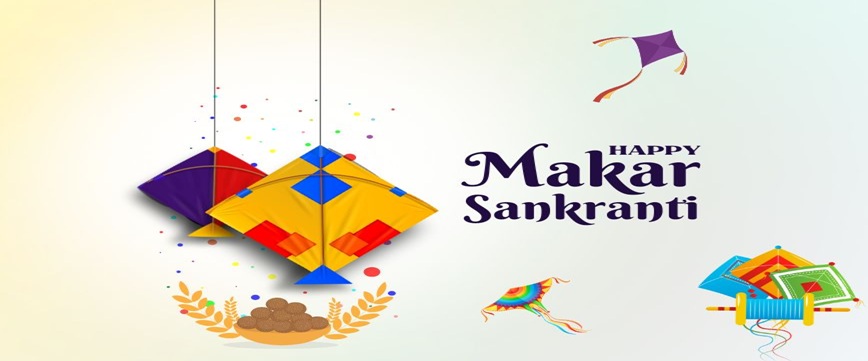About Makar Sankranti
Makar Sankranti is a vibrant harvest festival celebrated across India, marking the sun’s entry into the zodiac sign of Capricorn (Makara). Observed on January 14th or 15th, it signifies the end of winter solstice and the beginning of longer days. This festival is a time of joy, gratitude, and renewal, with strong religious, agricultural, and seasonal significance.
Significance of Makar Sankranti
Makar Sankranti is d...
About Makar Sankranti
Makar Sankranti is a vibrant harvest festival celebrated across India, marking the sun’s entry into the zodiac sign of Capricorn (Makara). Observed on January 14th or 15th, it signifies the end of winter solstice and the beginning of longer days. This festival is a time of joy, gratitude, and renewal, with strong religious, agricultural, and seasonal significance.
Significance of Makar Sankranti
Makar Sankranti is dedicated to Surya (the Sun God) and symbolizes the dispelling of darkness and the arrival of prosperity. In Vedic astrology, the sun’s transition into Capricorn is believed to bring positive energy, making it an ideal day for prayers, holy dips in rivers, charity, and sacred rituals. The festival also celebrates the harvest season, honoring farmers for their hard work and expressing gratitude for a bountiful yield.
Regional Celebrations
Makar Sankranti is celebrated differently across India:
• Pongal (Tamil Nadu): A four-day festival with traditional dishes like Pongal rice, kolam (rangoli), and cattle worship.
• Lohri (Punjab): Bonfires, dancing, and feasting on sesame seeds, jaggery, and peanuts.
• Uttarayan (Gujarat): Colorful kite flying fills the skies with vibrant patterns.
• Bhogali Bihu (Assam): Community feasts and traditional games mark the harvest.
• Khichdi (Uttar Pradesh & Bihar): People prepare khichdi and enjoy fairs and festivities.
Customs and Traditions
The festival is celebrated with various joyful customs:
• Kite Flying: Symbolizes joy and freedom, especially popular in Gujarat and Rajasthan.
• Special Food: Dishes like til laddoo and khichdi are prepared, symbolizing warmth and unity.
• Charity: Donating food, clothes, and essentials to the needy is considered auspicious.
• Bonfires and Music: Communities gather to sing, dance, and light bonfires, fostering togetherness.
Makar Sankranti Rangoli
Creating colorful rangolis is a key feature of Makar Sankranti. Rangolis are made with natural colors, rice flour, flowers, and leaves, often decorated with diyas (earthen lamps). They symbolize prosperity, welcome the new season, and reflect cultural heritage. Popular designs include floral patterns, kites, sun and moon motifs, and geometric shapes, often created as a community activity to bring people together.
Makar Sankranti Wishes
• Happy Makar Sankranti! May this harvest festival bring joy, prosperity, and good health.
• Wishing you a blessed Makar Sankranti filled with warmth, happiness, and delicious treats.
• May the sunshine brightly upon you and your family, bringing positivity and success.
• Let the sweetness of life and the warmth of the sun fill your days with happiness.





